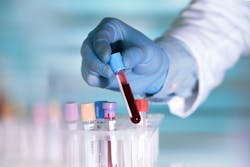Drawing a tube of blood could assess ALS risk from environmental toxin exposure
Now, investigators have developed an environmental risk score that assesses a person’s risk for developing ALS, as well as for survival after diagnosis, using a blood sample.
The results are published in the Journal of Neurology, Neurosurgery and Psychiatry.
Researchers obtained over 250 blood samples from participants in Michigan both with and without ALS. They calculated individual risk and survival models using 36 persistent organic pollutants.
Several individual pollutants were significantly associated with ALS risk. However, the risk for developing the disease was most strongly represented by a mixture of pesticides in the blood.
When considering the mixture of these pollutants, a person who was in the highest group of exposure had twice the risk of developing ALS compared to someone in the lowest group of exposure.
Michigan Medicine release on Newswise

